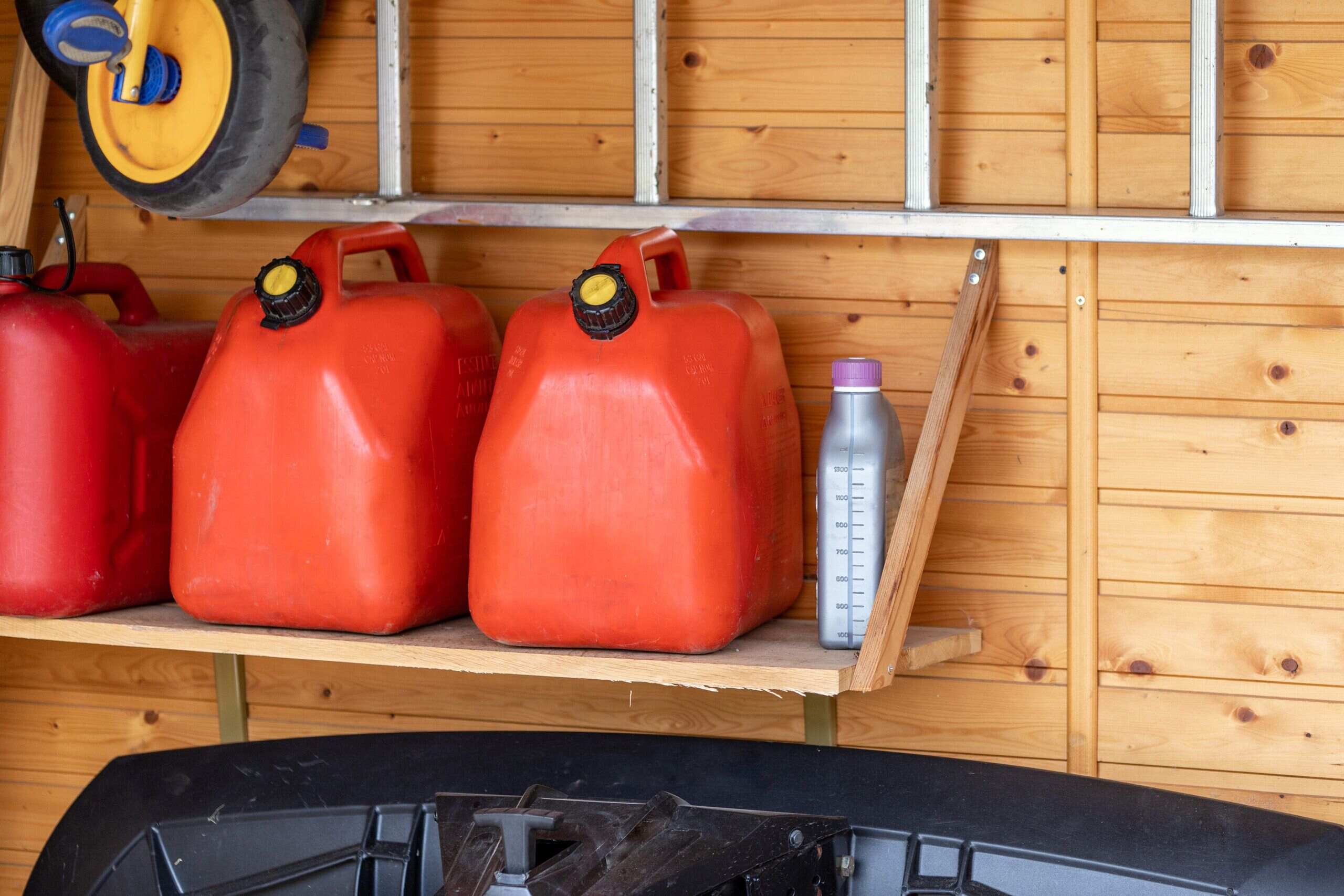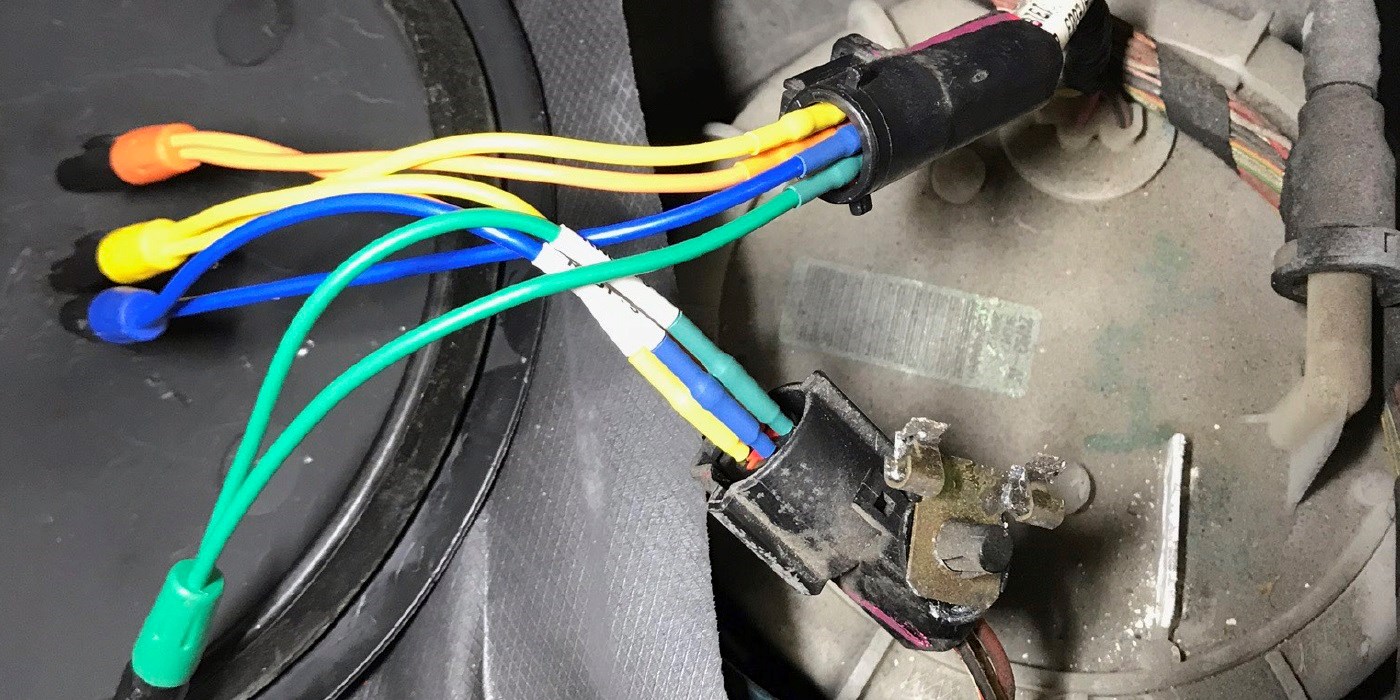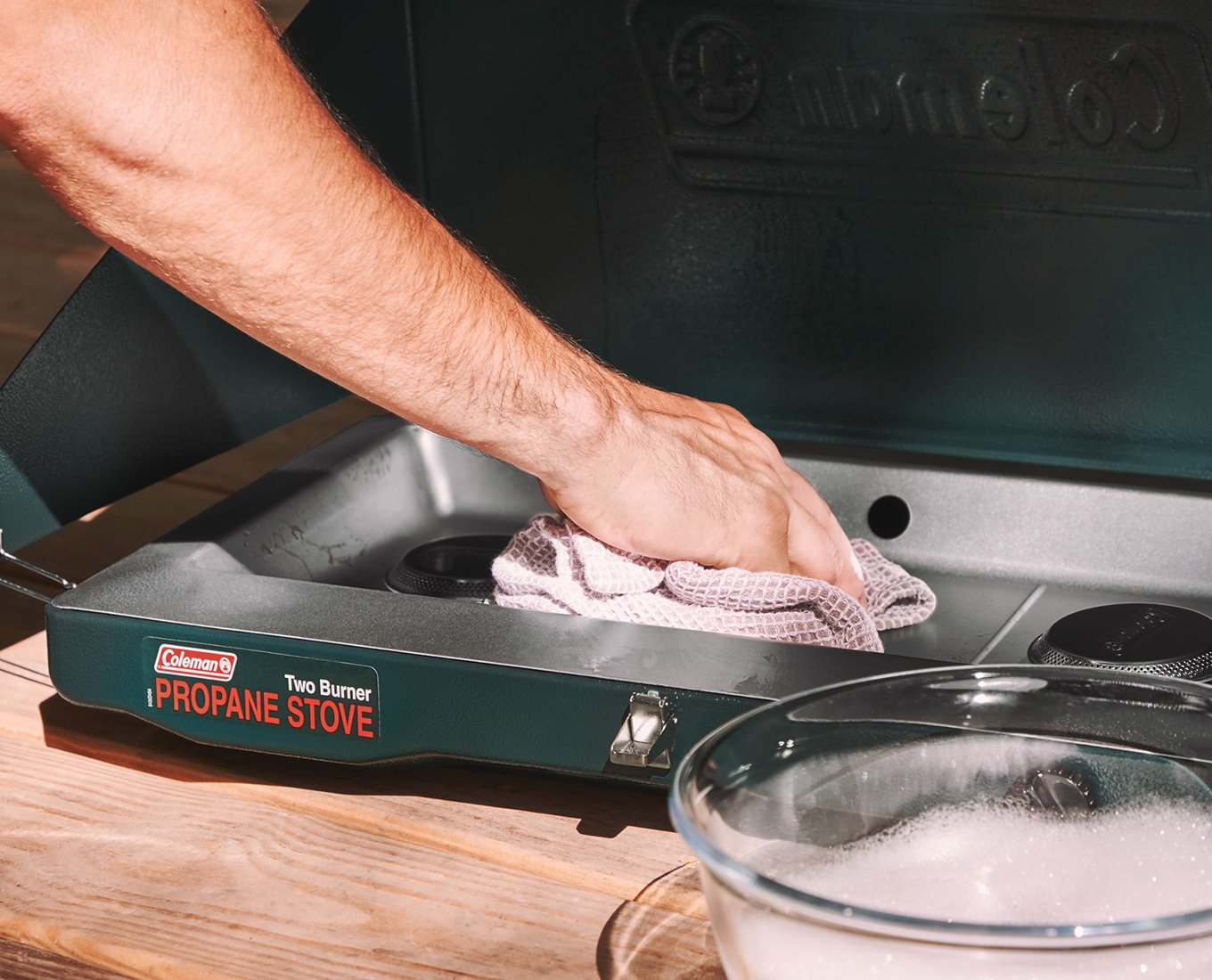

Articles
How To Store Fuel
Modified: January 8, 2024
Learn effective fuel storage techniques with our informative articles. Keep your fuel safe and secure for long-term use.
(Many of the links in this article redirect to a specific reviewed product. Your purchase of these products through affiliate links helps to generate commission for Storables.com, at no extra cost. Learn more)
Introduction
Welcome to our comprehensive guide on how to store fuel. Whether you are a homeowner looking to store fuel for emergencies or a business owner in need of proper fuel storage solutions, this article will provide you with all the information you need to ensure safe and efficient fuel storage.
Proper fuel storage is essential for a variety of reasons. It not only helps you stay prepared for unforeseen situations but also ensures the longevity and quality of the fuel. Additionally, following the right storage practices helps mitigate the risks associated with storing flammable substances, keeping you and those around you safe.
In this article, we will discuss the different types of fuel that can be stored, safety precautions to follow, various fuel storage container options, and the best practices for storing fuel at home and in vehicles. We will also touch upon the importance of proper labeling and documentation, the need for rotating fuel supplies, and how fuel storage aligns with emergency preparedness.
Whether you need to store gasoline, diesel, kerosene, or any other type of fuel, this guide will equip you with the knowledge needed to make informed decisions and handle fuel storage in a responsible and safe manner.
So, let’s dive in and explore the world of fuel storage!
Key Takeaways:
- Proper fuel storage is essential for emergency preparedness, cost savings, and environmental protection. Following safety precautions, using approved containers, and rotating fuel supplies are key to safe and efficient storage.
- Emergency preparedness involves assessing fuel needs, building reserves, and staying informed about local regulations. Proper labeling, documentation, and training are crucial for safe fuel storage during emergencies.
Read more: How To Store Diesel Fuel
Importance of Proper Fuel Storage
Proper fuel storage is of utmost importance for several reasons. It ensures the availability of fuel during emergencies, protects the environment, and maintains the quality of the fuel for efficient usage. Here are some key reasons why proper fuel storage is essential:
- Emergency Preparedness: Storing fuel allows you to be prepared for unexpected situations such as power outages, natural disasters, or any other event that may disrupt the regular supply of fuel. Having a reserve of fuel can provide you with peace of mind and help you tackle emergencies effectively.
- Continuity of Operations: For businesses that heavily rely on fuel, having a well-managed fuel storage system is crucial for uninterrupted operations. This is especially important for industries such as transportation, agriculture, construction, and backup power generation. Proper fuel storage ensures a steady supply, minimizing downtime and maximizing productivity.
- Reduced Costs: By storing fuel properly, you can avoid unnecessary wastage and degradation of fuel. This helps you save money by preventing the need to constantly replenish your fuel supply or dispose of fuel that has deteriorated due to improper storage practices.
- Environmental Protection: Storing fuel in an appropriate manner helps prevent leaks, spills, and contamination, thereby protecting the environment. Fuel leaks can have detrimental effects on soil, water bodies, and wildlife. By following proper storage guidelines, you can contribute to preserving the ecosystem and minimizing the risk of environmental harm.
- Optimal Performance: Fuel quality deteriorates over time, especially if exposed to air, moisture, or extreme temperatures. Proper fuel storage, which includes using suitable containers and managing temperature control, helps maintain the integrity of the fuel, ensuring it remains usable and performs optimally when needed.
By recognizing the importance of proper fuel storage, you can ensure the availability of fuel when you need it most, reduce costs, protect the environment, and maintain the quality of the fuel for efficient and reliable operations.
Types of Fuel to Store
When it comes to fuel storage, it’s important to understand that different types of fuels have different properties and storage requirements. Here are some common types of fuel that you may consider storing:
- Gasoline: Gasoline is the most commonly used fuel for vehicles and small engines. It is highly flammable and should be stored in approved containers designed for gasoline storage. It’s crucial to store gasoline away from sources of ignition and in a well-ventilated area to minimize the risk of fire and explosion.
- Diesel: Diesel is commonly used in trucks, heavy machinery, and backup generators. Unlike gasoline, diesel fuel is less volatile and requires proper storage to prevent contamination and maintain its quality. Diesel should be stored in a clean, dry, and well-ventilated area, away from direct sunlight or extreme temperatures.
- Kerosene: Kerosene is commonly used for heating, lighting, and certain appliances. It is important to store kerosene in approved containers and keep it away from open flames or sparks. Kerosene should be stored in a cool and well-ventilated area, ensuring it is tightly sealed to prevent evaporation.
- Propane: Propane is a popular fuel for grills, heaters, and cooking appliances. It is stored in specialized containers or tanks designed for propane storage. When storing propane, it should be kept in a well-ventilated area, away from heat sources, and always in an upright position.
- Alternative Fuels: With the increasing focus on sustainability, alternative fuels such as biodiesel, ethanol, and natural gas are gaining popularity. Each alternative fuel has its own storage requirements and considerations. It is important to consult the specific guidelines and recommendations for storing these fuels to ensure safety and proper functionality.
It’s worth noting that storing fuel for an extended period of time can lead to degradation. Therefore, it is important to rotate your fuel supply regularly and consider the shelf life of the specific fuel you are storing. This will help maintain the quality and usability of the fuel.
Before storing any type of fuel, it is always recommended to check with local regulations and authorities to ensure compliance with any storage restrictions or guidelines that may be in place in your area.
Safety Precautions
When it comes to storing fuel, safety should always be a top priority. Mishandling or improper storage of fuel can lead to serious accidents, fires, or even explosions. Here are some important safety precautions to follow:
- Choose the Right Storage Container: Use approved containers specifically designed for fuel storage. These containers are made of materials that are resistant to corrosion and can safely handle the flammable properties of the fuel. Avoid using containers that are not intended for fuel storage, such as plastic milk jugs or glass bottles.
- Store in a Well-Ventilated Area: Ensure that the storage area is well-ventilated to prevent the buildup of flammable vapors. Avoid storing fuel in confined or enclosed spaces, as this increases the risk of ignition and explosion. Adequate ventilation helps dissipate any fumes or vapors that may be present.
- Keep Away from Ignition Sources: Always store fuel away from potential ignition sources, such as open flames, sparks, electrical equipment, and heat sources. Even a small spark can ignite fuel vapors and lead to a dangerous situation. Maintain a safe distance between stored fuel and any potential sources of ignition.
- Secure the Storage Area: Prevent unauthorized access to the fuel storage area, especially in residential settings. Lock the storage area or use appropriate barriers to ensure that only authorized individuals have access. This helps prevent accidental spills, tampering, or misuse of the fuel.
- Handle with Care: When handling fuel, exercise caution to avoid spills. Spilled fuel is not only a waste but can also pose safety hazards. Clean up any spills immediately, using a proper absorbent material designed for fuel cleanup. Avoid using water, as it can spread the fuel and worsen the situation.
- Regular Inspection and Maintenance: Periodically inspect your fuel storage containers and equipment for any signs of damage or leaks. Replace any faulty or damaged containers immediately. Regular maintenance and inspection help ensure that your fuel storage system remains in good condition and minimizes the risk of accidents.
- Have Fire Safety Equipment on Hand: In case of emergency, it’s crucial to have appropriate fire safety equipment nearby. This may include fire extinguishers, fire blankets, or other firefighting equipment. Familiarize yourself with the proper use of these tools and ensure they are in good working condition at all times.
Remember, taking precautions and following safety guidelines is essential to protect yourself, others, and the environment from the potential hazards associated with fuel storage. If you have any concerns or questions about fuel storage safety, consult with local authorities or professionals who specialize in fuel storage and safety regulations.
Fuel Storage Container Options
Choosing the right fuel storage container is important to ensure the safe and efficient storage of fuel. There are several options available, each with its own advantages and suitability for different purposes. Here are some common fuel storage container options:
- Metal Jerry Cans: Metal jerry cans are a popular choice for fuel storage. They are sturdy, durable, and offer good protection against impact and punctures. Metal jerry cans typically have a tight seal and a built-in spout for easy pouring. It’s important to choose jerry cans made explicitly for fuel storage to ensure compatibility and safety.
- Plastic Fuel Containers: Plastic fuel containers are lightweight, affordable, and easy to carry. They are available in various sizes and shapes, allowing you to choose the one that best suits your needs. However, it’s crucial to use containers specifically designed for fuel storage, as some common plastic containers may not be compatible with fuel and can deteriorate over time.
- Fuel Storage Tanks: For larger-scale fuel storage, fuel storage tanks are a viable option. These tanks come in different capacities and can be above ground or underground. They are designed to store larger volumes of fuel and often include safety features such as built-in vents, gauges, and spill containment systems. Fuel storage tanks require professional installation and are subject to local regulations and permits.
- Drums and Barrels: Steel drums or barrels can also be used for fuel storage. They are durable, weather-resistant, and provide adequate protection for the stored fuel. However, it’s important to ensure that these drums are in good condition, properly sealed, and comply with safety standards. Regular inspection and maintenance are necessary to prevent leaks or corrosion.
- Portable Fuel Transfer Tanks: Portable fuel transfer tanks are designed for convenience and easy transportation. These tanks have a built-in pump or transfer system, allowing you to transport fuel safely. They are often used for refueling vehicles or equipment on job sites or remote locations. Portable fuel transfer tanks comply with safety regulations and are available in various sizes.
When selecting a fuel storage container, consider factors such as the volume of fuel you plan to store, the intended use, and the compatibility with the type of fuel. It’s important to follow the manufacturer’s guidelines and any local regulations or restrictions pertaining to fuel storage containers.
Remember, regardless of the type of fuel storage container you choose, always ensure proper labeling and identification of the fuel. This helps prevent any confusion and ensures safe handling and usage.
Read more: How To Store Fuel Long Term
Storing Fuel at Home
Storing fuel at home can be a practical solution for emergency preparedness or for certain activities such as powering generators, lawn equipment, or recreational vehicles. However, it’s crucial to follow proper guidelines to ensure safety and compliance with local regulations. Here are some tips for storing fuel at home:
- Choose a Suitable Storage Location: Select a well-ventilated, cool, and dry area for fuel storage. The location should be away from living spaces, open flames, electrical sources, and any potential sources of ignition. Avoid storing fuel in basements or confined spaces.
- Use Approved Containers: Store fuel in approved containers specifically designed for fuel storage. Metal jerry cans or plastic fuel containers that meet safety standards are recommended. Ensure that the containers are in good condition, tightly sealed, and labeled appropriately.
- Limit Fuel Storage Quantity: Check local regulations regarding the maximum quantity of fuel that can be stored at a residential property. It’s important not to store excessive amounts of fuel to avoid potential risks and adherence to legal requirements.
- Consider Fuel Stability and Shelf Life: Fuels, such as gasoline, can deteriorate over time. It’s important to rotate your fuel supply regularly, using the oldest fuel first. This helps maintain fuel quality and ensures you have fresh fuel available when needed.
- Maintain Proper Labeling: Clearly label the fuel containers with the type of fuel and the date of storage. This prevents any confusion and ensures the correct fuel is used when needed. Consider using color-coded labels for easy identification.
- Store in a Safe and Secure Manner: Keep fuel containers in a secure location, out of reach of children and pets. Lock the storage area if necessary, to prevent unauthorized access. Regularly inspect the fuel containers for any signs of damage, leaks, or corrosion.
- Prepare for Emergencies: Storing fuel at home is often done in preparation for emergencies. In addition to fuel storage, make sure you have an emergency preparedness plan in place, including other essential supplies like food, water, and first aid kits.
- Dispose of Unused or Deteriorated Fuel Properly: If you no longer need stored fuel or if it has gone bad, consult local regulations on how to safely dispose of it. Improper disposal of fuel can harm the environment and pose a risk to human health.
Always familiarize yourself with local regulations regarding fuel storage at home and follow the recommended safety guidelines. If in doubt, consult with professionals or local authorities for additional guidance.
Remember, safety should be the top priority when storing fuel at home, ensuring the well-being of your household and minimizing the risk of accidents or incidents.
Store fuel in a well-ventilated, cool, and dry area away from direct sunlight and sources of heat or ignition. Use approved containers and label them with the type of fuel and date of purchase. Regularly check for leaks and replace containers if damaged.
Storing Fuel in Vehicles
Storing fuel in vehicles can be necessary for various purposes, such as long trips, outdoor activities, or emergency preparedness. However, it’s essential to follow proper guidelines to ensure safety, prevent spills, and comply with regulations. Here are some tips for storing fuel in vehicles:
- Use Approved Fuel Containers: When storing fuel in vehicles, use approved containers specifically designed for fuel storage. Metal jerry cans or plastic fuel containers that meet safety standards are recommended. Ensure that the containers are in good condition, tightly sealed, and labeled appropriately.
- Securely Fasten Containers: Properly secure the fuel containers in the vehicle to prevent movement or spills during transit. It’s important to ensure that the containers are stable and will not shift or tip over, potentially causing a leak or an accident.
- Follow Vehicle Manufacturer’s Recommendations: Consult your vehicle’s owner’s manual or contact the manufacturer for any specific instructions or recommendations regarding fuel storage in your particular vehicle. Some vehicles may have guidelines on where to store fuel containers or specific weight limits for stored fuel.
- Maintain Ventilation in the Vehicle: Ensure that there is sufficient ventilation in the vehicle during fuel storage. This helps dissipate any fumes or vapors that may be present and reduces the risk of flammable vapors accumulating in the confined space of the vehicle.
- Place Fuel Containers in a Well-Ventilated Area: If storing fuel containers inside the vehicle, position them in a well-ventilated area, such as the trunk or a dedicated storage compartment. Avoid storing fuel containers in passenger areas, where occupants may be exposed to fumes or in the event of a spill.
- Be Mindful of Local Regulations: Check local regulations regarding the transportation and storage of fuel in vehicles. Some areas may have specific restrictions or guidelines that you need to comply with. Familiarize yourself with any applicable laws to ensure legal and safe fuel storage.
- Monitor Fuel Levels: Regularly monitor the fuel levels in the containers stored in your vehicle. Avoid overfilling the containers to allow for expansion due to temperature changes. Maintain fuel levels within the recommended range to minimize the risk of leakage or spills.
- Ensure Proper Transportation and Handling: During transit or when accessing the stored fuel, handle the containers with care to prevent spills or damage. Avoid rough handling or subjecting the containers to excessive vibration, as this can pose risks and increase the chances of a leak or spill.
Always prioritize safety when storing fuel in vehicles. Regularly inspect the fuel containers for any signs of damage or leaks, and replace them if necessary. If you need assistance or have any concerns about fuel storage in your vehicle, consult with professionals or contact the vehicle manufacturer for guidance.
Remember, adhering to safety guidelines and following regulations is crucial to ensure the safe storage and transportation of fuel in vehicles.
Proper Labeling and Documentation
Proper labeling and documentation are crucial aspects of fuel storage. They help ensure safety, organization, and efficient management of fuel supplies. Here are some important considerations for labeling and documenting fuel storage:
- Label Containers Clearly: Each fuel container should be clearly labeled with the type of fuel it contains. Use labels that are durable and resistant to fading or smudging. Include the date of storage, especially if the fuel has a limited shelf life. Clear labeling helps prevent confusion and ensures the correct fuel is used.
- Color-Coding: Consider using color-coded labels or markings for different types of fuel. This can provide an additional visual indicator, making it easy to identify the appropriate fuel quickly. Ensure that the color codes used align with any industry or regulatory standards in place.
- Emergency Contact Information: In case of accidents or emergencies, it’s important to have emergency contact information readily available. Label the fuel storage area with contact details of the appropriate authorities or emergency response teams, such as local fire departments or hazardous material response teams.
- Keep Records and Documentation: Maintain a record of fuel storage, usage, and any transfers. This documentation helps track fuel inventory, usage patterns, and rotation schedules. It is especially important for businesses or organizations that handle large fuel supplies to maintain accurate records for accounting, safety compliance, and regulatory purposes.
- Include Safety Information: Consider including safety information and guidelines on the labels or documentation. This can include instructions on proper handling, fire safety precautions, and emergency response procedures. Prominently display any relevant safety symbols or warnings to remind users of potential hazards associated with the stored fuel.
- Regularly Review and Update: Periodically review the labels and documentation to ensure they are accurate and up to date. Replace any damaged or faded labels immediately. Update any changes in fuel types, storage locations, or emergency contact information as needed.
- Training and Communication: Ensure that individuals who handle or have access to the fuel storage area are properly trained on the importance of proper labeling and documentation. Regularly communicate any updates or changes in labeling or documentation requirements to all relevant personnel.
Proper labeling and documentation play a vital role in maintaining a safe and well-organized fuel storage system. They facilitate efficient inventory management, aid in emergency response, and ensure compliance with relevant regulations. By giving due importance to labeling and documentation, you can create a safer and more reliable fuel storage environment.
Rotating Fuel Supplies
Rotating fuel supplies is an important practice to ensure the usability and quality of stored fuel. Just like any other perishable item, fuel can deteriorate over time, resulting in reduced efficiency and potential engine problems. Here are some key points to consider when implementing a fuel rotation system:
- First-In, First-Out (FIFO) Method: Adopt the FIFO method to ensure that the oldest fuel is used first. This means that when refueling or using fuel, always use the fuel that was stored first. By following this method, you ensure that fuel does not sit unused for extended periods, reducing the risk of degradation.
- Regular Fuel Inspections: Periodically inspect the stored fuel for any signs of degradation, including color changes, foul odors, or the presence of sediments. Such indications may suggest that the fuel is no longer usable or may cause engine problems. If any fuel shows signs of deterioration, it should be properly disposed of and replaced with fresh fuel.
- Proper Storage Conditions: Ensure the fuel is stored in optimal conditions to maintain its quality. This includes keeping the fuel containers tightly sealed, protecting them from exposure to extreme temperatures, moisture, and sunlight. By providing appropriate storage conditions, you can extend the shelf life of the fuel and minimize the risk of degradation.
- Regular Fuel Usage: Incorporate the use of stored fuel into your routine to ensure it gets utilized within a reasonable timeframe. For example, periodically run generators or equipment that use the stored fuel. This helps not only to rotate the fuel but also to ensure that the equipment remains in working order when it is needed.
- Monitoring Expiration Dates: Different types of fuel have different shelf lives, and it’s important to be aware of these expiration dates. Label each fuel container with the date of storage, and establish a system to track the expiration dates. This allows you to remove and replace expired fuel before it becomes a problem.
- Documentation and Record-Keeping: Maintain accurate documentation of fuel storage and usage. This includes recording the dates of fuel storage, usage, and any disposal. Proper documentation helps track the age and usage of stored fuel, enabling you to make informed decisions about rotating and replenishing the fuel supply.
- Regular Maintenance and Inspection: Regularly inspect fuel storage containers, fuel lines, and equipment that use stored fuel. Address any issues or signs of wear promptly to prevent leaks or contamination. Proper maintenance ensures the longevity of the fuel storage system and promotes the safe usage of fuel.
- Stay Informed: Stay updated on fuel industry trends and any changes in fuel formulations that may affect storage requirements. Being informed allows you to adapt your fuel storage practices to align with industry best practices and any updated guidelines or recommendations.
By implementing a proper fuel rotation system, you can ensure that your stored fuel remains in good condition, maintaining its usability and performance when you need it. It also helps prevent wastage and potential engine problems that can arise from using degraded fuel. Stay proactive in monitoring and rotating your fuel supplies to maximize their effectiveness and reliability.
Read more: How To Store Diesel Fuel At Home
Emergency Preparedness
Emergency preparedness is essential when it comes to fuel storage. Having a well-thought-out plan and being adequately prepared can make a significant difference during unforeseen events or disasters. Here are some key points to consider for emergency preparedness:
- Assess Your Fuel Needs: Evaluate your specific fuel requirements based on your location, activities, and potential emergency scenarios. Consider factors such as the duration of potential power outages or the need for fuel to operate generators, vehicles, or other equipment.
- Build a Fuel Reserve: Establish a fuel reserve that caters to your identified needs. Determine the appropriate amount of fuel to store based on the emergency situations you are preparing for. Ensure you have enough fuel to sustain you through extended periods without access to regular fuel supplies.
- Regularly Rotate Fuel Supplies: Implement a fuel rotation system to ensure that the fuel stored for emergencies remains fresh and usable. Use the “first-in, first-out” (FIFO) method, ensuring that the oldest fuel is consumed first and replaced with fresh fuel for future emergencies.
- Store Fuel Safely: Properly store fuel in approved containers, following safety precautions and guidelines. Ensure that fuel storage areas are well-ventilated, away from ignition sources, and secured from unauthorized access. Always label containers clearly and keep documentation of storage dates and types of fuel.
- Include Fuel in Emergency Kits: Consider including a small amount of fuel or fuel tablets in your emergency kits. These can be used for emergency cooking, warmth, or in portable stoves. Ensure that the containers are small, leak-proof, and fit within the size limitations of your emergency kits.
- Plan for Fuel Transportation: Develop a plan for transporting fuel during emergencies if necessary. Depending on the situation, you may need to safely transport fuel from storage locations to where it is needed. Ensure you have the appropriate containers, equipment, and knowledge to handle fuel transportation safely.
- Stay Informed and Updated: Stay informed about emergency preparedness guidelines and regulations in your area. Familiarize yourself with local emergency management protocols, evacuation routes, and fuel storage regulations. Regularly review your emergency preparedness plan and make necessary updates based on changing circumstances.
- Coordinate with Local Authorities: Reach out to local authorities or emergency management agencies to understand any specific guidelines or recommendations for fuel storage during emergencies. They can provide valuable information on best practices, local restrictions, and resources available during emergencies.
- Train and Educate: Ensure that all relevant individuals are familiar with your emergency preparedness plan and understand their roles and responsibilities. Train family members, employees, or anyone else involved in the handling or usage of fuel during emergencies. Regularly conduct drills or exercises to practice emergency fuel management.
Emergency preparedness includes considering fuel storage as an essential component. By being well-prepared and following proper guidelines, you can ensure the availability of fuel during emergencies, promote safety, and increase overall resilience in challenging situations.
Conclusion
Proper fuel storage is crucial for various reasons, including emergency preparedness, continuity of operations, cost savings, environmental protection, and optimal fuel performance. By following the guidelines outlined in this comprehensive guide, you can ensure safe and efficient fuel storage.
It’s important to understand the different types of fuel and their specific storage requirements. Using approved containers and selecting appropriate storage locations are key considerations to prevent accidents and contamination. Safety precautions, such as proper ventilation, securing the storage area, and handling fuel with care, should always be observed.
Labeling and documenting fuel storage is essential for organization, safety, and compliance purposes. Clear labeling, color-coding, and including important safety information on the labels or documentation are effective ways to maintain a well-managed fuel storage system.
Regularly rotating fuel supplies, monitoring expiration dates, and maintaining proper storage conditions help ensure the usability and quality of stored fuel. By implementing a first-in, first-out (FIFO) system and routinely inspecting fuel containers, you can minimize fuel deterioration and unexpected equipment problems.
During emergencies, having a well-prepared emergency plan, including fuel storage and transportation considerations, is essential. Assessing fuel needs, building a fuel reserve, and staying informed about local regulations and guidelines contribute to effective emergency preparedness.
Remember, safety should always be the top priority when it comes to fuel storage. Regularly review your fuel storage practices, stay updated on industry standards, and seek guidance from professionals or local authorities when needed.
By following the recommendations in this guide, you can ensure the availability, safety, and quality of your fuel supply, whether it’s for emergency preparedness, business operations, or personal use. Take the necessary steps to store fuel responsibly, and enjoy the peace of mind that comes with being prepared for any situation that may arise.
Frequently Asked Questions about How To Store Fuel
Was this page helpful?
At Storables.com, we guarantee accurate and reliable information. Our content, validated by Expert Board Contributors, is crafted following stringent Editorial Policies. We're committed to providing you with well-researched, expert-backed insights for all your informational needs.














0 thoughts on “How To Store Fuel”